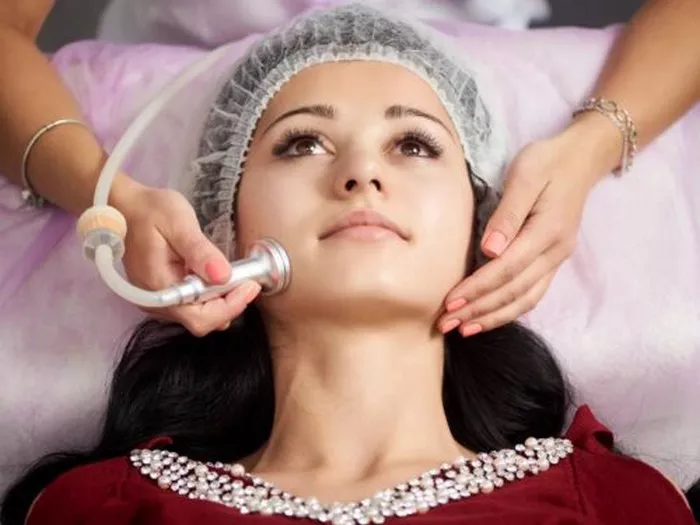Microdermabrasion is a popular skincare technique that offers a range of benefits, from exfoliating the skin and reducing the appearance of fine lines to improving overall skin texture and tone. Traditionally performed in a spa or dermatologist’s office, microdermabrasion has become more accessible with at-home devices. However, the question remains: How often can you safely use microdermabrasion at home? In this article, we’ll explore the world of at-home microdermabrasion, including its benefits, potential risks, and guidelines for determining the ideal frequency of use to achieve radiant and healthy skin.
Understanding Microdermabrasion
Microdermabrasion is a non-invasive skincare procedure that involves the mechanical or chemical exfoliation of the skin’s outermost layer, known as the stratum corneum. The primary goal is to remove dead skin cells, promote collagen production, and stimulate the growth of new, healthy skin cells. The two primary methods of microdermabrasion are:
Mechanical Microdermabrasion: This technique uses a handheld device that employs tiny abrasive crystals or a diamond-tipped wand to exfoliate the skin gently. The device simultaneously suctions away the exfoliated skin cells and debris.
Chemical Microdermabrasion: Chemical peels with alpha hydroxy acids (AHAs), beta hydroxy acids (BHAs), or enzymes can also be considered a form of microdermabrasion. These chemicals dissolve the bonds between dead skin cells, allowing them to be sloughed off more easily.
Benefits of Microdermabrasion
Microdermabrasion offers numerous benefits for your skin, including:
Exfoliation: Removal of dead skin cells can improve skin texture and reduce the appearance of fine lines and wrinkles.
Improved Skin Tone: Microdermabrasion can help fade age spots, sun damage, and uneven pigmentation, resulting in a more even skin tone.
Enhanced Product Absorption: Exfoliated skin is better able to absorb skincare products, allowing them to be more effective.
Stimulated Collagen Production: The mechanical or chemical exfoliation of microdermabrasion can stimulate collagen production, which helps maintain skin’s firmness and elasticity.
Reduced Pore Size: By removing debris and dead skin cells, microdermabrasion can temporarily reduce the appearance of enlarged pores.
Using At-Home Microdermabrasion Devices
At-home microdermabrasion devices have become increasingly popular due to their convenience and cost-effectiveness. These devices are designed for use in the comfort of your own home and come in various forms, including handheld devices, kits, and even skincare products with microdermabrasion-like properties.
The ideal frequency of at-home microdermabrasion use depends on several factors, including your skin type, the type of device or product you’re using, and your skincare goals. Here are some guidelines to consider:
Skin Type: If you have sensitive or easily irritated skin, you should use at-home microdermabrasion devices less frequently than those with less sensitive skin. Sensitive skin may only tolerate treatments once every two to four weeks.
Device Type: Read the manufacturer’s recommendations for your specific at-home microdermabrasion device. Some devices are designed for daily or weekly use, while others are intended for less frequent treatments.
Treatment Intensity: The intensity of your microdermabrasion treatment can also impact how often you should use it. A gentler treatment may be suitable for more frequent use, while more aggressive treatments may require longer intervals between sessions.
Skincare Goals: Consider your skincare goals when determining the frequency of microdermabrasion. If you’re targeting specific concerns like acne scars, fine lines, or hyperpigmentation, you may benefit from more frequent treatments.
Consult a Professional: If you’re unsure about how often to use your at-home microdermabrasion device, consider consulting a dermatologist or skincare professional. They can provide personalized recommendations based on your skin’s unique needs.
Potential Risks of Overuse
While microdermabrasion can be an effective skincare tool, it’s essential to use it cautiously to avoid potential risks associated with overuse. Using microdermabrasion too frequently can lead to:
Irritation: Overusing microdermabrasion can irritate the skin, causing redness, dryness, and increased sensitivity.
Breakouts: Excessive microdermabrasion can disrupt the skin’s barrier, potentially leading to breakouts and acne flare-ups.
Skin Damage: Aggressive or frequent microdermabrasion can damage the skin and worsen certain skin conditions.
Hyperpigmentation: In some cases, overuse of microdermabrasion can lead to hyperpigmentation, particularly in individuals with darker skin tones.
Conclusion
At-home microdermabrasion devices offer a convenient and cost-effective way to enjoy the benefits of this skincare technique. However, the ideal frequency of use depends on your skin type, the device or product you’re using, and your skincare goals. To achieve the best results and minimize the risk of overuse, it’s essential to follow the manufacturer’s recommendations and consult a skincare professional if you have any doubts or concerns. With proper use, microdermabrasion can be a valuable addition to your skincare routine, helping you achieve smoother, more radiant, and healthier-looking skin.


